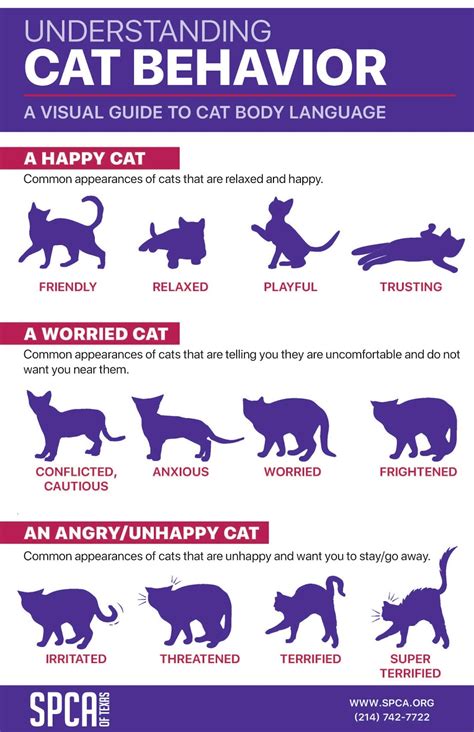Understanding Cat Behavior
Cats are fascinating creatures with unique behaviors. Understanding their body language and vocalizations can help you bond with your furry friend. Cats communicate through:

- Tail position: Swishing tail indicates agitation, while a high, relaxed tail shows contentment.
- Body posture: A crouched stance with ears flattened indicates fear, while a relaxed, stretched-out body suggests comfort.
- Facial expressions: Dilated pupils indicate excitement or fear, while narrowed eyes indicate aggression.
- Vocalizations: Meows can vary in pitch and volume, indicating different needs and emotions.
Cat Care Essentials
Providing proper care is crucial for your cat’s well-being. Essential elements include:
Nutrition: Feed your cat a balanced diet specifically formulated for their age and health needs.
Grooming: Regular brushing helps remove loose hair and prevent matting. Trim your cat’s nails regularly to avoid scratching.
Litter box: Provide a clean, private litter box filled with suitable litter. Scoop waste daily.
Vaccinations: Vaccinations protect your cat from common diseases. Consult your veterinarian for recommended vaccines.
Dental care: Brush your cat’s teeth regularly to prevent dental disease.
Cat vs. Dog Behavior
Comparing cats and dogs reveals distinct differences in their behaviors:
- Independence: Cats are more independent than dogs and prefer to spend time alone.
- Affection: Dogs are more affectionate and crave human attention, while cats are more selective in their affection.
- Energy levels: Dogs generally have higher energy levels than cats and require more exercise.
- Training: Dogs are easier to train than cats, as they are more eager to please their owners.
- Grooming: Dogs require more grooming than cats due to their longer coats.
Senior Cat Care
As cats age, their needs change. Senior cat care includes:
- Increased medical attention: Senior cats are more prone to health issues, requiring regular veterinary check-ups.
- Mobility assistance: Provide ramps or stairs to help senior cats move around comfortably.
- Diet adjustments: Adjust your cat’s diet to ensure it meets their nutritional needs in old age.
- Mental stimulation: Provide interactive toys and activities to keep senior cats mentally engaged.
- Socialization: Ensure senior cats have opportunities for social interaction, even if they prefer solitude.
Veterinary Care for Cats
Veterinary care is essential for your cat’s well-being. Petplan Insurance reports that for cats in the UK,
- Average annual insurance claim in 2022: £599.20
- Average claim for a foreign body removal: £3,000
- Average claim for cancer treatment: £5,000
Regular veterinary check-ups help detect and prevent health problems. Signs of cat illness include:
- Loss of appetite
- Lethargy
- Vomiting
- Diarrhea
- Coughing
- Difficulty breathing
If you observe any of these signs, consult your veterinarian promptly.
Case Studies
-
Case Study: The Feral Feline: Rescuing and socializing a feral cat requires patience and understanding. Humane Society International estimates that there are 100 million stray cats in the United States.
-
Case Study: Senior Cat Comfort: Adapting a home for an aging cat involves providing ramps, soft bedding, and easy access to food and water. Blue Cross estimates that there are 1.9 million pet cats aged 11+ in the UK.
-
Case Study: Cat Training Success: Using positive reinforcement techniques, cats can be trained to perform simple commands like “sit” and “stay.” The International Cat Care organization reports that 57% of cat owners have trained their cats.
Conclusion
Understanding cat care and behavior is crucial for providing your furry companion with a long, healthy, and happy life. By meeting their physical, emotional, and behavioral needs, you can foster a strong bond with your beloved feline friend.





















